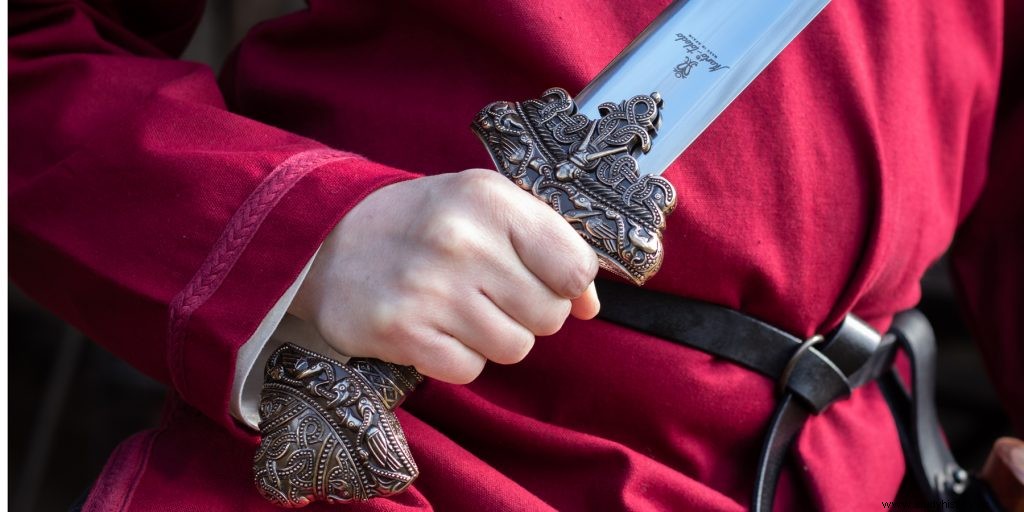Looting hordes of men armed to the teeth – that's what comes to mind when we think of Vikings. The dreaded Norsemen caused fear and terror in Central Europe for three centuries. But what made her do it? And were all northerners really such barbarians?
Where does the term Viking come from?
The origin of the term Viking has not been finally clarified. Perhaps the name comes from the Old Norse language. It probably derives from the word “vikingr” which means robber or sea warrior. The term may also have its origins in the Latin word "vicus". This describes a seafarer who goes from port to port. The Vikings never referred to themselves as such. At least there is no evidence for this. Rather, they chose terms such as Norsemen or Norsemen.
When did the Viking Age begin?
Although the first Norsemen had already plundered the European coasts before that, the attack on the English monastery of Lindisfarne in Northumberland in June 793 is considered the beginning of the Viking Age. It is the first major raid that has been documented in writing. This incident left fear and terror in the whole of England. Over the next three centuries, the raiding hordes of the Norse expanded their raids further and further south.
The Wedding of the Vikings
From the 8th to the 11th century, the Norsemen made Central Europe unsafe. The coasts of France and southern England were raided by Danish sailors, while the Norwegians plundered northern England and Ireland, Iceland and Greenland. Swedish raiders used the rivers in Eastern Europe to extend their raids to the Black Sea. Some Norsemen even ventured as far as North America, trading all the way down to ports in Italy and Spain.
When did the Vikings last?
The time of the Vikings ended in the 11th century. It was an insidious process that was driven by the strengthening seafaring skills of the other countries in Europe and the increasing Christianization of the north. The former warriors became more and more peaceful and settled down. The Battle of Hastings in 1066 is considered the official end of the Viking Age. The French Norman William the Conqueror conquered England in October of that year and from then on, as William I, King of England, ensured that the Vikings' raids were made more difficult.

What made a Viking?
The Vikings were not a uniform ethnic group. Rather, all peoples from the north, predominantly from the Scandinavian countries of Denmark, Sweden and Norway, who came to Central Europe between the 9th and 11th centuries were referred to as Vikings. They were sailors who traveled the seas to find booty and new places to settle. Although the Vikings are considered true machos, which they probably were, at home it was their women who ruled. Since their men were often on the hunt for months, they had great influence in their homeland and managed the looted property.
Robbing and looting - what was behind it?
Vikings are known as barbaric raiders who raided ports and coastal towns for booty. But why did they do that? In Scandinavia people lived mainly as farmers. A work that is even more tedious in the north than in central and southern Europe. Most Norsemen were poor and struggling to survive. In the early Middle Ages, traders and other seafarers brought tidings of wealthy, poorly secured cities north, raising hopes for a better life. Men were quickly found who went south on their ships. The experienced seafarers already had the necessary ships and resources. The first raids by the Vikings were so successful that from then on they regularly set off for the port cities to the south.
So the Vikings deserve their notorious reputation?
The Norsemen were rightly feared in the Middle Ages. Wild and cruel, they fell upon the cities with swords, axes and saxes and plundered their treasures in order to make a better life for themselves. But not all people from the north earned their living in this way. Many Nordic seafarers were traders who did their business by barter. They brought amber, furs and animal skins as well as weapons from their homeland and exchanged them for precious metals, fabrics, armor and spices. Slaves were also part of their merchandise. During their forays, they captured numerous people who were then sold to the Near East.
